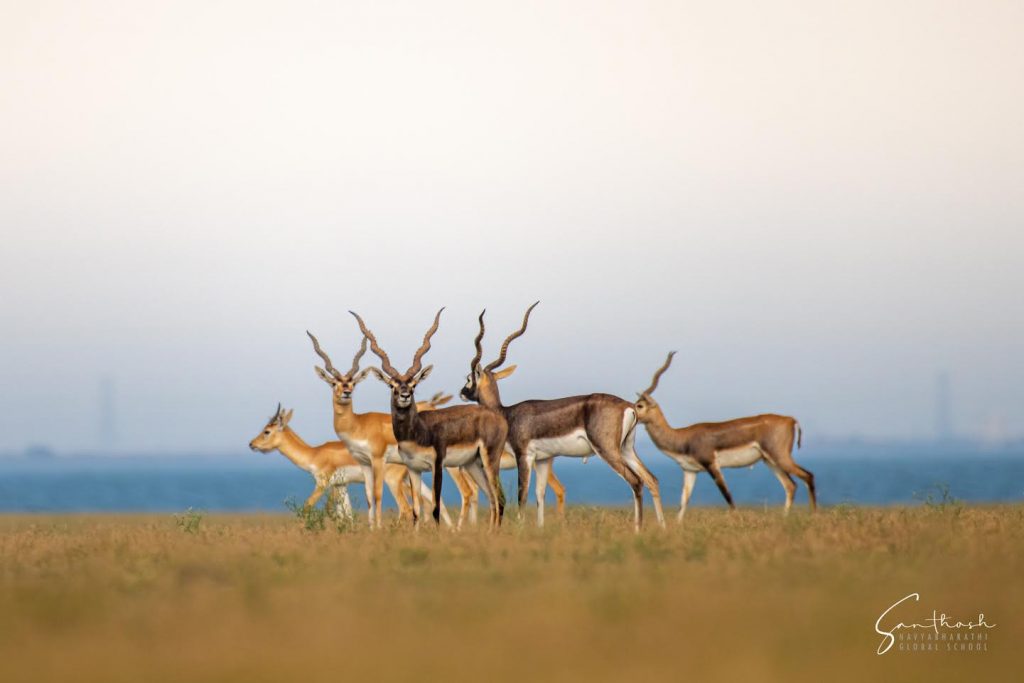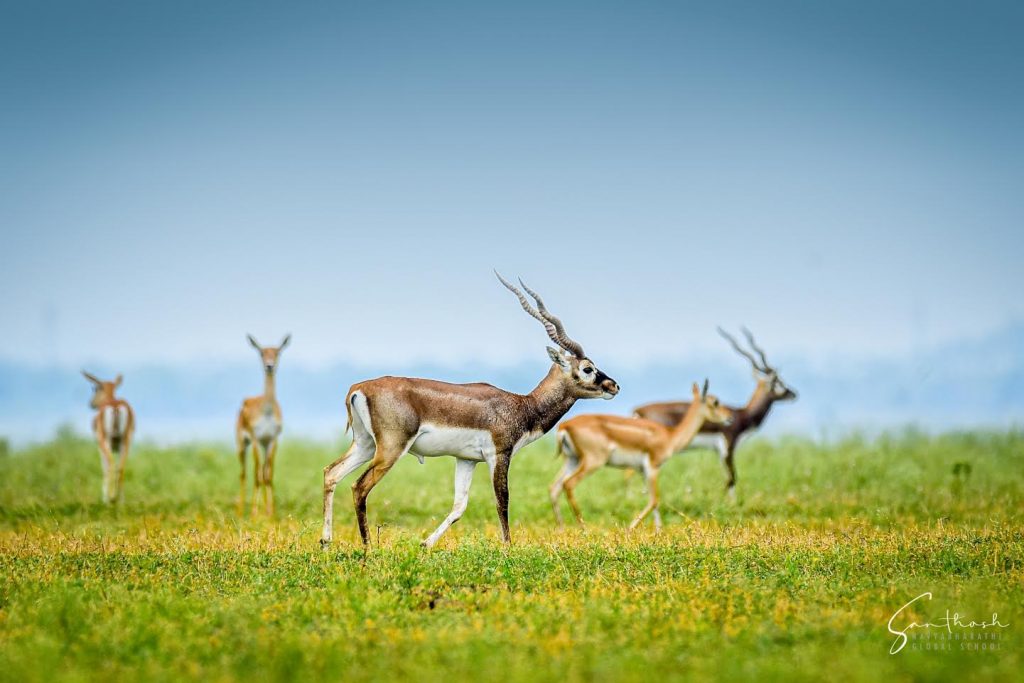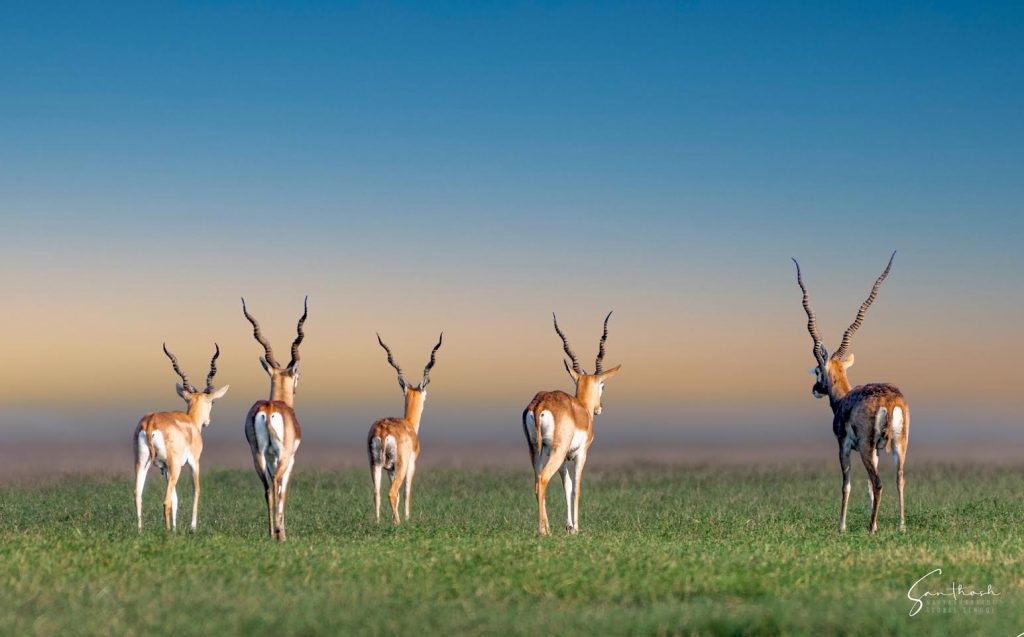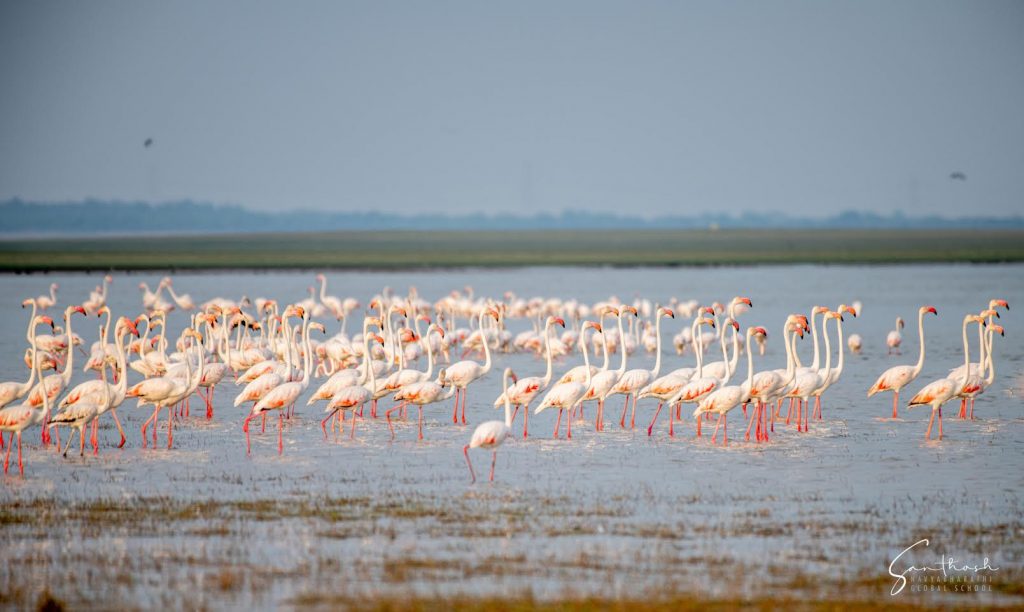Santosh Kumar – the renowned Wildlife Photographer of India visited this wildlife sanctuary many times to capture the beauty in a camera. He was born and brought up in Hyderabad and lives in Hyderabad. He is an educationist by profession and a huge nature lover. He clicked some great pictures of wild animals including black bucks.

Pocharam Forest & Wildlife Sanctuary is situated at a distance of 15 km from Medak and around 115 km from Hyderabad, Telangana, India. Pocharam Forest was reported to be a favourite hunting ground for the Hyderabad Nizam who had declared it as a wildlife sanctuary as early as the beginning of the 20th century. The sanctuary gets its name from the Pocharam Lake formed after the construction of Pocharam dam on Allair River between 1916 – 1922. The sanctuary is spread over 130 square kilometres. Surrounded by lush green forest, the place has rich flora and fauna attracting winged visitors such as Brahminy Bucks, Bar-Headed Goose, and Open Billed Stork. The place is an ideal spot for ecotourism where visitors can enjoy spotting five species of Antelopes and Deer. The sanctuary is home to animals like Wild Dog, Leopard, Wolf, Jackal, Forest Cat, Sloth Bear, Sambar, Nilgai, Chinkara, Chital, and four-horned Antelope. The ideal season to visit is October to May and for accommodation, tourists can book the inspection bungalows at Pocharam and Medak. Forest rest house is available at Medak.

The blackbuck (Antelope cervicapra), also known as the Indian antelope, is an antelope native to India and Nepal. It inhabits grassy plains and lightly forested areas with perennial water sources. The antelope is native to and found mainly in India, while it is locally extinct in Pakistan and Bangladesh. Formerly widespread, only small, scattered herds are seen today, largely confined to protected areas. During the 20th century, blackbuck numbers declined sharply due to excessive hunting, deforestation, and habitat degradation.

Today, only small, scattered herds are seen that are largely confined to protected areas. The blackbuck is listed under Appendix III of CITES. In India, hunting of blackbuck is prohibited under Schedule-1 of the Wildlife Protection Act of 1972. It inhabits several protected areas of India. The blackbuck is one of the few antelopes whose colour differs between sexes. The males are rich dark brown above, on the sides, and on the outside of the legs. Females tend to be yellowish in the same areas. It can run at a speed of 80 kilometres per hour. The wolf is a major predator. Old rutting bulls might be especially vulnerable prey. The golden jackal hunts juveniles. Village dogs are reported to kill fawns.


To read the full article kindly subscribe to the Magazine…





